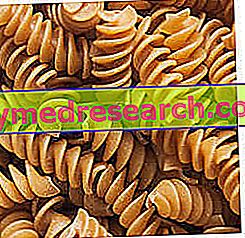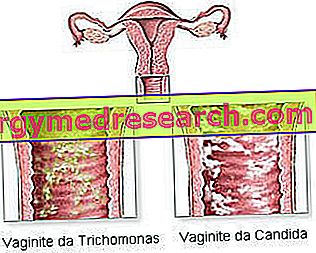Definition
The Fire of St. Anthony is an infectious disease caused by the virus Herpes zoster (HSV-3), the same person responsible for varicella: the disease regresses in a few days after a targeted therapy with antiviral drugs. St Anthony's fire causes a constant itchy and very painful sensation, due to the appearance of erythema and blisters.
Causes
St Anthony's fire is a possible consequence of chickenpox, an infectious disease typical of childhood: after curing chickenpox, the immune system is not able to produce enough antibodies to permanently eliminate Herpes zoster, which takes refuge in nerve endings (latency). Herpes zoster can appear again in certain favorable conditions: decreased immune defenses (AIDS, chemotherapy, corticosteroids, advanced age ...), excessive exposure to sunlight or cold, psychophysical stress.
Those who have never had chickenpox will not be able to contract St. Anthony's Fire
Symptoms
The fire of Saint Anthony begins with the eruption of small vesicles full of liquid, located most often on the thoracic area, creating irritation, redness of the skin and numbness in the affected area. The bubbles are very annoying, as well as very painful: the patient often complains of chills, fever, stomach pain, headache and malaise.
Natural Care
The information on Herpes Zoster Drugs - Fire of St. Anthony is not intended to replace the direct relationship between health professional and patient. Always consult your doctor and / or specialist before taking Herpes Zoster Cure Drugs - Fire of Saint Anthony.
drugs
In St. Anthony's fire, it is possible to reduce the symptoms, the duration of the disease and any complications annexed through a systemic antiviral drug therapy: the treatment must be started no later than 72 hours after the first prodrome (skin rash), and should be continued for 7-10 days (disappearance of symptoms). In immunocompromised subjects, parenteral drug therapy is preferable in order to avoid the risk of developing a serious infection of serious entity.
- Acyclovir (eg Aciclovir, Xerese, Zovirax): it is recommended to take 800 mg of active ingredient 5 times a day for a period varying from 7 to 10 days, based on what was dictated by the doctor. In immunocompromised patients, intravenous administration of aciclovir at a dose of 10 mg / kg every 8 hours for 2 or 3 weeks is recommended.
- Famciclovir (eg Famvir, Famciclovir): the drug is administered orally at a dose of 500 mg every 8 hours. Unless otherwise instructed by the doctor, continue the treatment for 7 days; the effectiveness of the drug is high when you start the therapy no later than 48 hours after the first symptoms appear.
- Valaciclovir (eg Talavir, Zelitrex): take one 1 gram tablet three times a day (every 8 hours) for seven days. The effectiveness of the treatment against shingles is guaranteed when the active ingredient is taken within 48 hours of the onset of the prodromes; on the other hand, after 72 hours from the onset of skin rash, Valaciclovir does not ensure its effectiveness. Valaciclovir is also useful in cytomegalovirus prophylaxis in kidney transplant recipients.
The drugs just analyzed are particularly effective also to avoid the risk of the most problematic complication of Herpes zoster: post-herpetic neuralgia
- Cytarabine (eg Ara-C, Depocyte): this active ingredient has shown positive antiviral activity in vivo and in vitro against the Herpes Labial, genital and zoster virus. It has therapeutic efficacy in case of resistance to other drugs. It is administered via IV (solution for injection).
- Brivudine (eg Brivudine, Bivirac, Zecovir): administer one tablet (125 mg) orally per day for a week. Also indicated for cold sores (cream).
- Idoxuridine (eg Iducher, Idustatin): 5% solution in dimethylsulfoxide, second choice drug (dubious efficacy).
Furthermore, there are pharmacological substances that are particularly useful for speeding up the recovery of the patient's health (not to be used as a cure for shingles):
- Heparin and zinc-based ointments: they are able to decrease the duration of skin irritation
- Interferon (eg Alfaferone): useful as a powerful antiviral
- Immunostimulant drugs: useful in case of deficiency of the host's immune defenses
- Analgesic drugs (NSAIDs)
In the case of Herpes zoster, it is advisable to keep the skin covered and dry, protecting the affected area with sterile gauze.
When not properly treated, the shingles fire can cause serious damage to the patient's health.
Zostavax is indicated for the vaccination of people aged 60 or over to prevent herpes zoster and associated post-herpetic neuralgia. According to a recent study, this vaccine helps to halve the risk of developing Post Herpetic Neuralgia compared to unvaccinated subjects.



